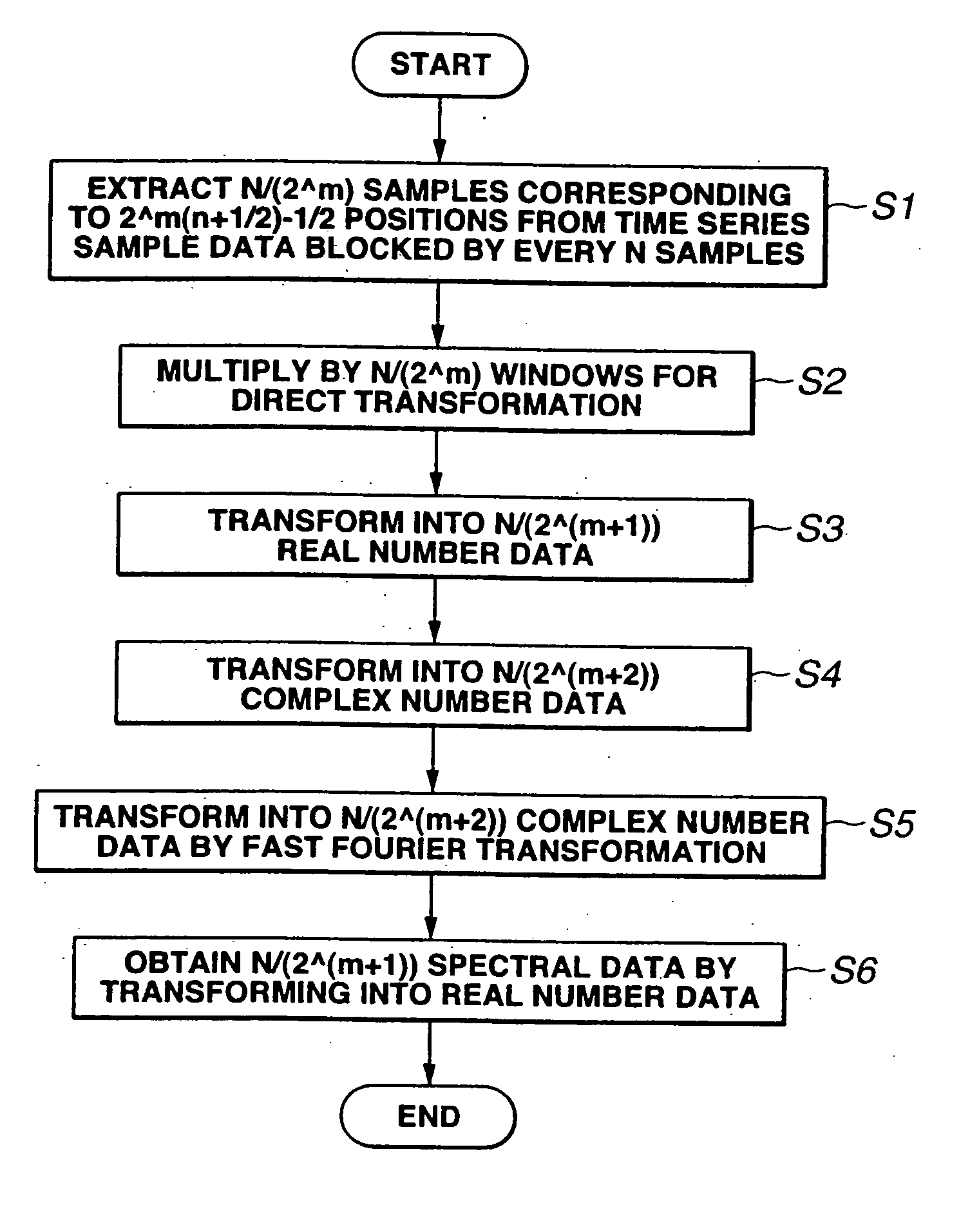Signal processing device and signal processing method
a signal processing and signal processing technology, applied in the field of signal processing devices and signal processing methods, can solve the problems of not established a relationship, volume of computations, and inability to perform computations for an fft of the size of n/a
- Summary
- Abstract
- Description
- Claims
- Application Information
AI Technical Summary
Benefits of technology
Problems solved by technology
Method used
Image
Examples
Embodiment Construction
[0123] Now, the present invention will be described in greater detail by referring to the accompanying drawing that illustrate preferred embodiments of the invention.
[0124] Firstly, the principle of computations that is adopted to the present invention will be discussed before describing specific embodiments of signal processing device and signal processing method according to the invention.
[0125] When performing computations of MDCT (modified DCT) with a signal processing device and a signal processing method according to the invention, formula (28) below is used to extract N / (2{circumflex over ( )}m) samples corresponding to 2{circumflex over ( )}m(n+{fraction (1 / 2)})−{fraction (1 / 2)} positions out of the time series sample data that are divided into blocks, each comprising N samples. Y21(k)=∑n=0N / 2m-1X21(2m(n+12)-12)cos(π(2k+1)(2m+1n+N / 2+2m)2N),for 0≤k≤N2m+1-1(28)
[0126] Then, the input signals X21 are multiplied by window H21 to produce X22, using formula (29) ...
PUM
 Login to View More
Login to View More Abstract
Description
Claims
Application Information
 Login to View More
Login to View More - R&D
- Intellectual Property
- Life Sciences
- Materials
- Tech Scout
- Unparalleled Data Quality
- Higher Quality Content
- 60% Fewer Hallucinations
Browse by: Latest US Patents, China's latest patents, Technical Efficacy Thesaurus, Application Domain, Technology Topic, Popular Technical Reports.
© 2025 PatSnap. All rights reserved.Legal|Privacy policy|Modern Slavery Act Transparency Statement|Sitemap|About US| Contact US: help@patsnap.com



